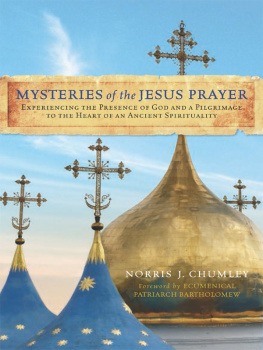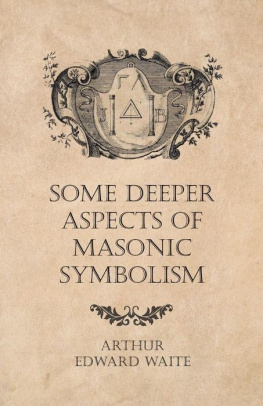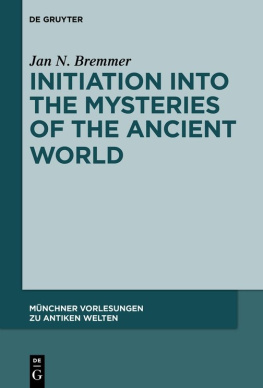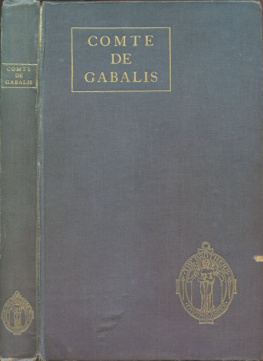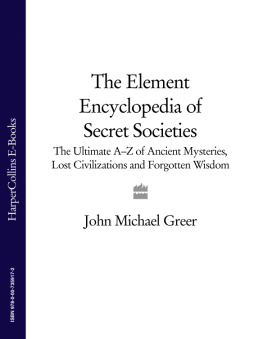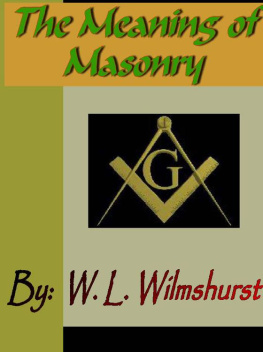Lecture 11. The Symbols And Legends Of Masonry, Continued
In this concluding lecture of the series, we will consider the remaining important symbols and legends of Masonry.
SACRED OR INEFFABLE NAME.
This symbol was universal in ancient times, for every nation of antiquity had its Sacred Name or Ineffable Word. The Hebrew symbol consists of four letters, Yod, He, Vau, He, and is called the Tetragrammaton, or four lettered word. This word was said to have been communicated by God to Moses at the burning bush. The name was held most sacred by the Jews, but its meaning and proper pronunciation has long been obscured.
Before the invention of the masoretic points the pronunciation of a word in the Hebrew language could not be known by the characters themselves, so it was easy in the course of time to lose the proper pronunciation. Especially so, as at the beginning of the Hellenistic age the use of the name was reserved for the temple. At the beginning of the Christian era, Philo writes, The four letters may be mentioned or heard only by holy men whose ears and tongues are prepared by wisdom,, and by no others in any place whatsoever. In the course of time the pronunciation of the name, even by the temple priests, fell into disuse, and the manner of its pronunciation at length became a secret entrusted only to the few. While the word was being withdrawn from common use, it was pronounced Adonai in the scripture;-, and when the vowel points were introduced those that belonged to Adonai were placed under the Tetra-grammaton.
The word itself is a symbol; the letters are probably arranged as a blind. As they stand in the Tetragrammaton they have no significance. They do not represent any real Hebrew word. Now if we apply the Hebrew method of halving or transposing letters which was used to conceal the meaning of a word, or rather if we reverse the process which may have been employed, we get instead of Y. H. V. H., H. V. H. Y. Before the introduction of vowel signs, certain weak consonants such as Yod and Vau, were sometimes used to indicate vowel sounds, so we frequently see I or E given as an equivalent for Yod, and U or O given for Vau. Even Yod is sometimes given as Jod, and Vau as Waw, so we have the name given as Y. H. V. H. or I. H. V. H. or J. H. V. H., or Y. H, W. H., or I. H. O. H., etc.
Now the personal pronouns He and She are written in Hebrew with the signs He, Vau, A-leph, and He, Yod, A-leph. When Aleph terminates a word, and has no vowel immediately preceding or following, if- is usually dropped. Now if we drop the final Aleph we have the transposed Tetragrammaton, H. V. H. Y., which are the personal pronouns He and She, the male and female, representing the two great principles of nature,the dual aspect of the Second Logos.
Now if we turn to the Kabbalah, which contains some portions of the secret teachings of the Jews, we shall find that this great principle is the exact meaning of the Tetragrammaton. It does not represent the Absolute Deity, or the Unmanifested Logos, but it does represent the manifested, the first emanationAdam Kadmon. The two aspects of Being which are potential in the First Logo, become manifested in the later stages of evolution. This name represents the four worldsAlseluth, signified by Yod, Briah by He, Yezerah by Vau, and Asiah by the Second He. The source of the Tetragrammaton is Absolute Deity, Ain-Soph, the Causeless Cause. The Tetragrammaton is also the Sephiroth, which are ten in number, and emanate one from the other. The highest is Kether, the Crown; then comes Chockmah and Binah, the male and female principles. From these emanate the other seven. The very fact that the meaning of the Tetragrammaton is identical with the words obtained by transposing the letters, is sufficient evidence that the word was really H. V. (or W. U. O.) H. Y. (or J. I. E.), according to the equivalents adopted for the signswhether interpreted as consonants or vowelsand the names given to the signs.
The meaning and pronunciation of the word was carefully guarded. There is no hint given in the ritual for this secrecy, but there is a scientific reason, for the mystic Word has to do with the science of rhythmic vibrations which is the key to the equilibrium of all forces. In all mysticism the knowledge of names meant the possession of powers. The spoken name gave one the power of the name. It is interesting to note how the Jews worked this idea into their system. In the Talmud the wonderful works of Jesus are ascribed to his use of the Sacred Name. According to early traditions the knowledge whereby he wrought these works was learned in Egypt, but in the developed Toldoth the word of power was the Holy Name,the Tetgrammaton.
All nations of antiquity had their Sacred Names, which were Words of Power. These names were formed by taking a letter which conveyed a meaning and adding other letters each having a meaning; the whole word thus formed constituting a Sacred Name or Word, which contains some great truth. These Names were Words of Power, for, as the unfolding consciousness realizes one truth after another and becomes that truth, it rules. In Persia the Sacred Name was H. O. M., in India A. U. M., in Scandinavia I. O. W., in Greece I. A. O., etc.
THE RITE OF CIRCUMAMBULATION
This Rite again connects Freemasonry with the Ancient Mysteries. It consists in a formal procession around the altar, and originally alluded to the apparent course of the sun which is from east to west. In ancient Greece the priests, during the Rites of sacrifice, walked three times around the altar while chanting a sacred hymn, which was divided into three parts, and each part was to be sung at a particular point in the procession.
The analogy between this practice of the ancients and the recitations of a passage of Scripture in the Masonic circumambulation' is quite apparent. In making this circuit it was considered necessary that the right side should always be next to the altar, and so the procession moved from west to the north, then east, south, west and then to the north again. We find the same Rite among the Romans, Druids, and Hindus. In all these ceremonies they were imitating the example of the sun and following his beneficent course.
THE LEGEND OF THE WINDING STAIRS.
This Legend is connected with the Fellow Craft degree. It is based upon I Kings, vi, 8, The door for the middle chamber was in the right side of the house; and they went up with winding stairs into the middle chamber, and out of the middle into the third.
Out of this slender material, says Dr. Mackey, has been constructed an allegory, which, if properly considered in its symbolical relations, will be found to be of surpassing beauty. But it is only as a symbol that we can regard this whole tradition; for the historical facts and the architectural details alike forbid us for a moment to suppose that the legend, as it is rehearsed in the second degree of Masonry, is anything more than a magnificent philosophical myth. (The Symbolism of Freemasonry, Mackey, p. 215.)
The lesson which this legend teaches is not difficult to discover. Freemasonry is a speculative science which has for its object the investigation of divine truth. The candidate is in search of more light, and as all the ceremonies denote a progress from a lower to a higher state, he is always progressing. This fundamental symbolism of Masonry is found in each degree. There is the mystical ladder, the ceremony of circumambulation, the restoration to life, etc. The Legend of the Winding Stairs symbolizes the same factthe ascent of man from ignorance to knowledge, from darkness to light, from death to life.
The steps of the Winding Stairs commenced on the porch of the Temple. This indicates the beginning of the masonic lifethe preparation for entering the temple.
It is curious to note that the number of steps in all the systems has been odd. This probably is due to the fact that the symbolism of numbers was borrowed from Pythagoras, in whose system of philosophy the odd numbers were regarded as sacred, though the number of steps has greatly varied. Tracing boards have been found in which only five steps are represented, and others which denote seven. At one time in England the number was thirty-eight, which was reduced to thirty-seven, and in this country the number has been reduced to fifteen. Perhaps five would be the more appropriate as the stairs only extended to the middle chamber. The number seven, corresponding to the number of rounds in the mystic ladder, would indicate the attainment of perfection the Holy of Holies. We might say that the complete stairs are composed of seven steps,three carrying the candidate into the ground floor of the temple, two into the middle, and two into the inner sanctuary. The general symbolism of the Legend is not affected by the number of steps, or the method of division.


